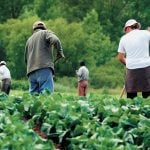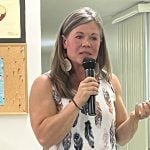Decisions about spring tillage are always matters of compromise. Tillage accomplishes a number of beneficial goals in weed control and seed bed preparation. It also uses time, energy and water and has the potential to reduce soil quality.
Jennifer Bromm interviewed many organic farmers in Saskatchewan about their tillage practices. She found that judicious spring tillage was often a part of their management systems. Tillage was used more often if fields were weedy, intended crops were weak competitors or soils were cold and wet.
Early spring cultivation warms and dries the soil and stimulates weed germination. Later cultivation, after weed emergence, kills the weeds and provides a clean and light seed bed.
Read Also

VIDEO: Green Lightning and Nytro Ag win sustainability innovation award
Nytro Ag Corp and Green Lightning recieved an innovation award at Ag in Motion 2025 for the Green Lightning Nitrogen Machine, which converts atmospheric nitrogen into a plant-usable form.
In very weedy fields, or for crops that are especially weak competitors, some producers use several light cultivations before seeding. Each cultivation eliminates one flush of weed seedlings, and stimulates the next flush. Timed five to 10 days apart, this sort of tillage can drastically reduce weeds.
Repeated tillage dries the soil, and should be used only if moisture reserves are ample. Bromm found that most of the organic producers that used this form of preseeding tillage farmed in the wetter black soil zone.
In the drier brown and dark brown soils, Bromm found that organic producers were more concerned with conserving soil moisture. In drier soils, techniques included an early harrowing to stimulate germination, with a packer following the harrows to reduce the erosion potential and retain more moisture.
The packer further encouraged weed germination. These weeds were removed with tillage at seeding.
In warmer soils, some producers chose to delay tillage until weeds were up, then they harrowed and seeded. Aggressive harrowing can bring rocks to the surface and close soil cracks. This can reduce further moisture loss.
Organic producers were aware of the problems that tillage can cause. On land with the potential for wind or water erosion, tillage increases that potential.
Tillage reduces the activity of soil organisms, particularly the beneficial mycorrhizae that are part of the soil nutrient cycling.
Tillage uses fossil fuel. Pre-seeding tillage delays seeding, which can result in problems at harvest time.
Several organic farmers that Bromm interviewed were reducing tillage. They kept it to a minimum and avoided it entirely on light soils and in dry years. They often eliminated pre-seeding tillage, but seeded with a disc, a cultivator and seed drill, or with an air seeder. The limited tillage during seeding was enough to reduce winter annuals and early emerging weeds, aerate the soil and bury crop residues.
Most organic producers who do not use pre-seeding tillage seed early, some as soon as they can get the tractor in the field.
Direct seeding is more common on pea or cereal stubble than on flax or hemp stubble.
Early seeding can allow the crop to emerge before the weeds, giving it a substantial advantage. This is especially effective when major weeds are later emerging species, like redroot pigweed or green foxtail.
With weeds like wild oats, it is especially important to get the crop up early because wild oats that emerge with the crop or before are much more competitive than those that emerge later. Some producers “skim” or use a blind cultivation just before the crop emerges.
In this operation, producers will lightly cultivate, rod weed, rotary hoe or harrow to eliminate surface weeds. Carefully timed, this reduces the weed competition while still reducing the amount of time that the soil is black.
Care needs to be taken both in timing and depth to avoid damaging crop seedlings. This technique is more appropriate for crops that keep their growing points deeper in the soil.
No-till technology evolved in partnership with herbicides. Organic producers are seeking ways to reduce the harmful impacts of tillage without herbicides. This includes avoiding tillage under dry conditions and using the least intensive tillage possible for weed management.
It also includes long-term solutions that reduce erosion, such as increasing organic matter through green manure, establishing shelter belts, and where moisture permits, using cover crops.
The farmer interviews cited above were conducted by Jennifer Bromm, BSc, A.Ag., while she was a Research Technician with the Organic Agriculture Centre of Canada. Frick is the prairie co-ordinator for the OACC located at the University of Saskatchewan. She can be reached at 306-966-4975, at brenda.frick@usask.ca, or www.organicagcentre.ca.














